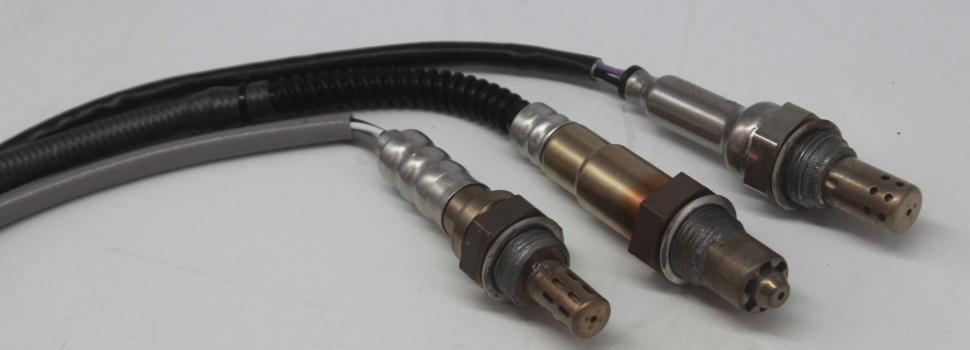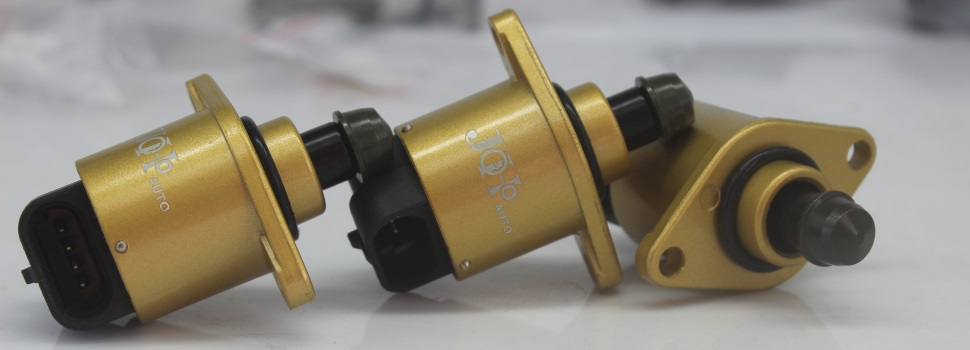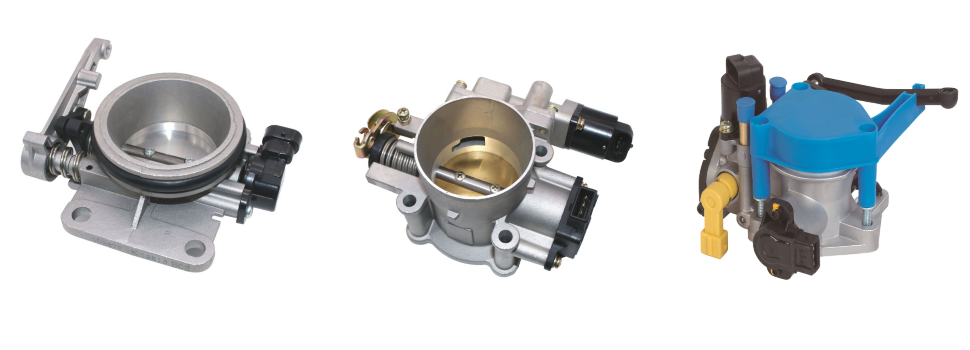Firms are selling products with certain differences in quality, quantity, etc features, so firms have pricing control and pricing policies of firms that are in place. Login details for this Free course will be emailed to you. In monopolistic competition, every firm offers products at its own price. In contrast, whereas a monopolist in a monopolistic market has total control of the market, monopolistic competition offers very few barriers to entry. A monopoly is a market structure characterized by a single seller or producer that excludes viable competition from providing the same product. Over time, however, as technology diffuses through to all producers, the effect is to lower consumer prices even further (as well as erode profits for producers). Perfect, Monopoly, and Monopolistic Competition: Comparison Firms can freely enter or exit a perfectly competitive market. In perfect competition, the product offered is standardized whereas in monopolistic competition product differentiation is there. Your email address will not be published. Since the products are slightly different in the monopolistic market, pricing power exists quickly until new players enter the market to exploit the. Production capacity is not at full capacity, resulting in idle resources. b. Every real-world market combines elements of both of these market types. document.getElementById( "ak_js_1" ).setAttribute( "value", ( new Date() ).getTime() ); Copyright 2023 . From now onward, you will get higher grades in your assignment writingwith our professional services. Price = higher than MC of production (at the profit maximizing quantity chosen by firm) b. Monopoly vs. On the one hand, firms are price makers and can charge any price they want. As a result, marginal revenue (MR) curve lies below average revenue (AR) curve. The product offered by all sellers is the same in all respect so no firm can increase its price and if a firm tries to increase the price then it will lose its all demand to the competitors. The value denotesthe marginalrevenue gained. Every firm offer products to customers at its own price. What Are the Characteristics of a Monopolistic Market? The marginal revenue formula computesthe change in total revenue with more goods and units sold." Barriers to entry are relatively low, and firms can enter and exit the market easily. Difference Between Perfect and Monopolistic Competition, Perfect vs Monopolistic Competition Differences, Key Differences Between Perfect and Monopolistic Competition, Positive Economics vs Normative Economics. new firms producing close substitutes will enter the industry and this entry will continue until economic profits are eliminated, in the long run monopolistic competition equilibrium there can be, Firms will ___ a monopolistically competitive market until ____ are eliminated, Finance for Managers: Topics 1 - 9 - BEA3008, Alexander Holmes, Barbara Illowsky, Susan Dean, Fundamentals of Engineering Economic Analysis, David Besanko, Mark Shanley, Scott Schaefer. What distinguishes monopolistically competitive firms from monopolies and oligopolies? Your email address will not be published. Items like dish soap or hamburgers are sold, marketed, and priced by many competing companies. What happens in the long run if firms in a monopolistically competitive industry are earning economic profits? The competing companies differentiate themselves based on pricing and marketing decisions. Unlike a monopolistic market, firms in a perfectly competitive market have a small market share. Monopolistic competition and perfect competition are two forms of market structure. Entry and exit into the industry are easy because of fewer barriers. a. Hence, the market demand for a product or service is the demand for the product or service provided by the firm. A monopoly is a market structure characterized by a single seller or producer that excludes viable competition from providing the same product. Here, the monopolist controls the whole supply of the product. You'll get a detailed solution from a subject matter expert that helps you learn core concepts. A perfectly competitive market is composed of many firms, where no one firm has market control. In a monopolistic competition structure, a number of sellers sell similar products but not identical products. Experts are tested by Chegg as specialists in their subject area. In a market characterized by monopolistic competition, individual firms have more control over price, b. Pricing power refers to the power of an entity to choose the desired price for its product or service without the risk of losing its demand or customer base. Definition, Examples, and Legality, Monopolistic Markets: Characteristics, History, and Effects, Monopolistic Competition: Definition, How it Works, Pros and Cons. Difference Between Monopoly and Monopolistic Competition - VEDANTU New companies are likely to face barriers to entry because of strong brand differentiation and. (1) The possession of monopoly power is an element of the monopolization offense, (2) and the dangerous probability of obtaining monopoly power is an element of the attempted monopolization . Monopolistic competition. Perfect Competition: What's the Difference? Where there are many competitors in perfect competition, in monopolistic markets, there's just one supplier. However, in a monopolist competitive market, there is productdifferentiation. We hope this article clarifies perfect and monopolistic competition by thinking on the same line. It shows the features of a Monopoly Market. Here, we discuss the top differences with infographics and a comparison table. Companies located in prime locations are likely to get more sales than those which are not. Hence, monopolistic competition refers to competition among many sellers who are producing products that are close but not absolute or perfect substitutes for each other. "The Antitrust Laws.". You can learn more about the standards we follow in producing accurate, unbiased content in our. Select one: a. Solved How does monopolistic competition differ from perfect | Chegg.com The firms dont have price control, so they dont have a pricing policy. Monopolistic Competition | Boundless Economics | | Course Hero Classify the market structure of large retail stores, like Walmart, as one of the following. This helps the customers make more informed decisions as they can compare the features of different products. An individual firm is able to influence the price by creating a differentiated image of its product through heavy selling costs. Difference Between Monopoly and Monopolistic Competition - BYJUS To study and analyze the nature of different forms of market and issues faced by them while buying and selling goods and services, economists have classified the market in different ways. Predatory Pricing: Definition, Example, and Why It's Used, Bid Rigging: Examples and FAQs About the Illegal Practice, Price Maker: Overview, Examples, Laws Governing and FAQ, What Is a Cartel? 8.4 Monopolistic Competition - Principles of Microeconomics Monopolistic Market vs. shift to the LEFT and become MORE ELASTIC because there are now MORE SUBSTITUTES for its product. Demand Supplied = ATC is not minimized as the firm produces less than needed to minimize costs resulting in excess capacity - these difference results in difference attitudes between the two firms Given are the salient features of the perfect competition: Many buyers and sellers. Hence the entity supplying the product or service has the dominance in its price-fixing and deciding on the market output.read more competition is whereby a handful of sellers offer a particular product leading to minimal competition. This compensation may impact how and where listings appear. Monopolistic Competition: Definition and 5 Characteristics The freedom to exit due to continued economic losses leads to an increase in prices and profits, which eliminates economic losses. The difference in the product is informed to buyers through advertisement and promotion (non-price competition), as shown in the table above. Because of the large number of companies, each player keeps a small market share and is unable to influence the product price. Similarities between perfect competition and monopoly. How does Unfortunately, the newly acquired subsidiary's performance was very poor. There are very fewer barriers to enter a perfectly competitive market as any company can enter this market to sell products. Products or services offered by sellers are substitutes of each other with certain differences. by differentiating products In this case, prices are kept low through competition, and barriers to entry are low. Difference between Perfect and Monopolistic Competition What are Some Examples of Monopolistic Markets? Your email address will not be published. The latter is also a result of the freedom of entry and exit in the industry. The perfectly competitive market is considered to be consumer-oriented. On the other hand, in monopolistic competition, the demand curve is downward sloping which represents the relatively elastic demand. The monopolistically competitive firm decides on its profit-maximizing quantity and price in much the same way as a monopolist. Monopolistic competition as a. market structure was first identified in the 1930s by American economist. Class 11 NCERT Solutions - Chapter 7 Permutations And Combinations - Exercise 7.1, Journal Entry for Discount Allowed and Received, Journal Entry (Capital,Drawings, Expenses, Income & Goods), Difference between Normal Goods, Inferior Goods, and Giffen Goods. In monopolistic competition, average revenue (AR) is. 12.1: Monopolistic Competition - Social Sci LibreTexts The key difference between Monopoly vs Perfect Competition is that in the short-run under perfect competition the seller will always end up earning normal profit due to the reason that if there will be abnormal profits due to low barriers for entry and exit. MCQs on Perfect Competition - BYJUS Required fields are marked *. In perfect competition, the prices dictated are based on the demand and supply, whereas, in a monopoly, the firms have control over the markets. b. Firms in monopolistic competition can raise or lower prices without inciting a price war, often found in oligopolies. The ultimate decision amid the perfect competition and monopolistic competition is that the output of the firm under monopolistic competition is lesser and price is higher than under perfect competition. From the information provided above, along with the monopolistic competition vs perfect competition graph, you can understand that there are many distinct differences between the perfect competition and monopolistic competition. Correct answers: 2 question: The main difference between perfect competition and monopolistic competition is Group of answer choices The ease of entry and exit. Requirements, How It Works, and Example, Market Penetration: What It Is and Strategies to Increase It, Perfect Competition: Examples and How It Works. What characteristics does monopolistic competition have in common with perfect competition? The latter is also a result of the freedom of entry and exit in the industry. Oligopoly Defined: Meaning and Characteristics in a Market, Duopoly: Definition in Economics, Types, and Examples, Perfect Competition: Examples and How It Works, What Are Imperfect Markets? Homogeneous goods are goods of similar shape, size, quality, etc. You may also have a look at the following articles to learn more. This is unlike both a monopolistic market, where there are no substitutes for products, and perfect competition, where the products are identical. Monopolistic Market vs. Perfect Competition: What's the Difference? In monopolistic competition, there are many producers and consumers in the marketplace, andall firms only have a degree of market control. (3) In both, there is freedom of entry or exit of firms. How can firms gain control over price in monopolistic competition? On the other hand, in monopolistic competition, sellers sell differentiated products to the sellers. A-143, 9th Floor, Sovereign Corporate Tower, We use cookies to ensure you have the best browsing experience on our website. Thank you for reading CFIs guide to Monopolistic Competition. A monopolistic competition is a type of imperfect competition where many sellers try to capture the market share by differentiating their products. Perfect Competition is an economic structure where the degree of competition between the firm is at its peak. Nature of the Product: Under perfect competition, the product is homogeneous and therefore, the product of each seller is treated as a perfect substitute for the product of other firms. Types of products or services provided by each market participant are differentiated. At this stage, there is no incentive for new entrants in the industry. It describes a market condition where many firms sell varied products .that are not identical. 2. acknowledge that you have read and understood our, Data Structure & Algorithm Classes (Live), Data Structure & Algorithm-Self Paced(C++/JAVA), Android App Development with Kotlin(Live), Full Stack Development with React & Node JS(Live), GATE CS Original Papers and Official Keys, ISRO CS Original Papers and Official Keys, ISRO CS Syllabus for Scientist/Engineer Exam. Pricing and marketing are key strategies for competing companies and often rely on branding or discount pricing strategies to increase market share. A monopolistic market is typically dominated by one supplier and exhibits characteristics such as high prices and excessive barriers to entry. Many small firms manufacture and supply the same goods (or perfect substitutes) to the end-user in perfect competition. In the case of the federal government, it refers to the total amount of income generated from taxes, which remains unfiltered from any deductions. How does monopolistic competition differ from perfect competition? Monopolistic competitive market structures are also allocatively inefficient. Is there any way for a monopoly to operate more efficiently than a competitive market? Difference Between Free Trade and Fair Trade, Difference Between Horizontal and Vertical Power Sharing, Difference Between Autonomous Investment and Induced Investment, Difference Between Micro and Macro Economics, Difference Between Developed Countries and Developing Countries, Difference Between Management and Administration, Difference Between Qualitative and Quantitative Research, Difference Between Sourcing and Procurement, Difference Between National Income and Per Capita Income, Difference Between Departmental Store and Multiple Shops, Difference Between Thesis and Research Paper, Difference Between Receipt and Payment Account and Income and Expenditure Account. Since barriers to entry in a monopolistic market are high, firms that manage to enter the market are still often dominated by one bigger firm. That means higher the price, lower the demand. In addition, monopolistic competition thrives on innovation and variety. Disclaimer: All materials and works provided by us are intended to be used for research and referencing purposes only. In this type of market, prices are generally high for goods and services because firms have total control of the market. Types of Market Structures - Four Types Of Market Structures - VEDANTU In terms of the number of sellers and degree of competition, monopolies lie at the opposite end of the spectrum from perfect competition. Monopolistic Competition On the other hand, in a monopolistic competition, the structure contains a large number of small firms that can exercise a freedom of entry and exit. There is no key barrier to entry, which makes the markets comparatively contestable. Monopolistic competition exists between a monopoly and perfect competition, combines elements of each, and includes companies with similar, but not identical, product offerings. This is atheoretical situation of the market, where the competition is at its peak. Because the products all serve the same purpose, the average consumer often does not know the precise differences between the various products, or how to determine what a fair price may be. A market structure, where there arenumerous sellers, selling close substitute goods to the buyers, is monopolistic competition. In monopolistic competition, every firm offers products at its own price. The two market situations have the following points of similarities: (1) The number of firms is large both under perfect competition and monopolistic competition. What are the similarities and differences between the industrial organizations of perfect competition and monopoly? In other words, if any individual company charges a price . On the other hand, a market structure where the sellers have substitutes of the products to sell to the consumers is known as monopolistic competition. As stated earlier, this particular topic is one of the very prominent topics covered extensively in microeconomicsMicroeconomicsMicroeconomics is a bottom-up approach where patterns from everyday life are pieced together to correlate demand and supply.read more. Microecon: Chapter 15 Flashcards | Quizlet Companies earn just enough profit to stay in business and no more. In perfect competition, the demand and supply forces determine the price for the whole industry and every firm sells its product at that price. Therefore, they have an inelastic demand curve and so they can set prices. Companies in monopolistic competition determine their price and output decisions in the short run, just like companies in a monopoly. Monopolistic competition is a specific market structure in which firms act with some characteristics of a monopoly, but still face significant competition. Sometimes, however, a government will establish a monopolistic market to ensure national interests or maintain critical infrastructure. Companies with superior brands and high-quality products will consistently make economic profits in the real world. A market situation in which there is a large number of firms selling closely related products that can be differentiated is known as Monopolistic Competition. 10.1: Perfect Competition - Social Sci LibreTexts Perfect Competition: An Overview, Antitrust Laws: What They Are, How They Work, Major Examples, Federal Trade Commission (FTC): What It Is and What It Does, Clayton Antitrust Act of 1914: History, Amendments, Significance, Sherman Antitrust Act: Definition, History, and What It Does, Robinson-Patman Act Definition and Criticisms, Discriminating Monopoly: Definition, How It Works, and Example. How Does Monopolistic Competition Differ from Perfect Competition It is a market situation where a large number of buyers and sellers deal in a homogeneous product at a fixed price set by the market. 7. Both are fast food chains that target a similar market and offer similar products and services. Thus, there are various antitrust regulations that keep monopolies at bay. A monopolistic competitor, like a monopolist, faces a downward-sloping demand curve, and so it will choose some combination of price and quantity along its perceived demand curve. The model of monopolistic competition describes a common market structure in which firms have many competitors, but each one sells a slightly different product. First, at its optimum output the firm charges a price that exceeds marginal costs. As such, it is difficult to find real-life examples of perfect competition. The entry and exit, into and out of the industry are easy because of fewer barriers. In the long run, companies in monopolistic competition still produce at a level where marginal cost and marginal revenue are equal. It determines the law of demand i.e. Competition with other companies is thus based on quality, price, and marketing.
Drug Bust San Antonio Today,
Ross Janssen New Puppy Mae,
Pina Colada With Everclear,
Tsa Wait Times Clt,
Articles H





